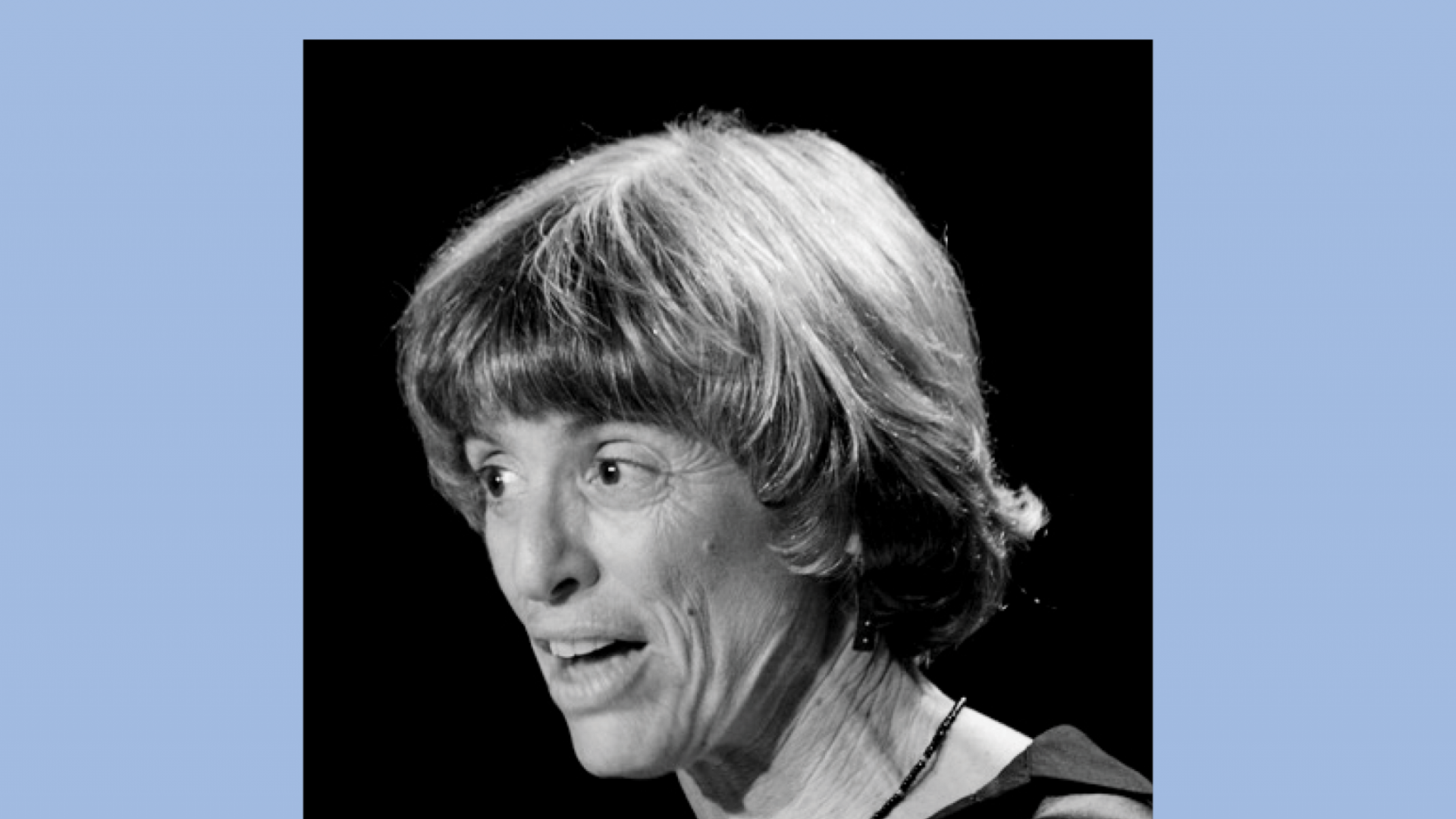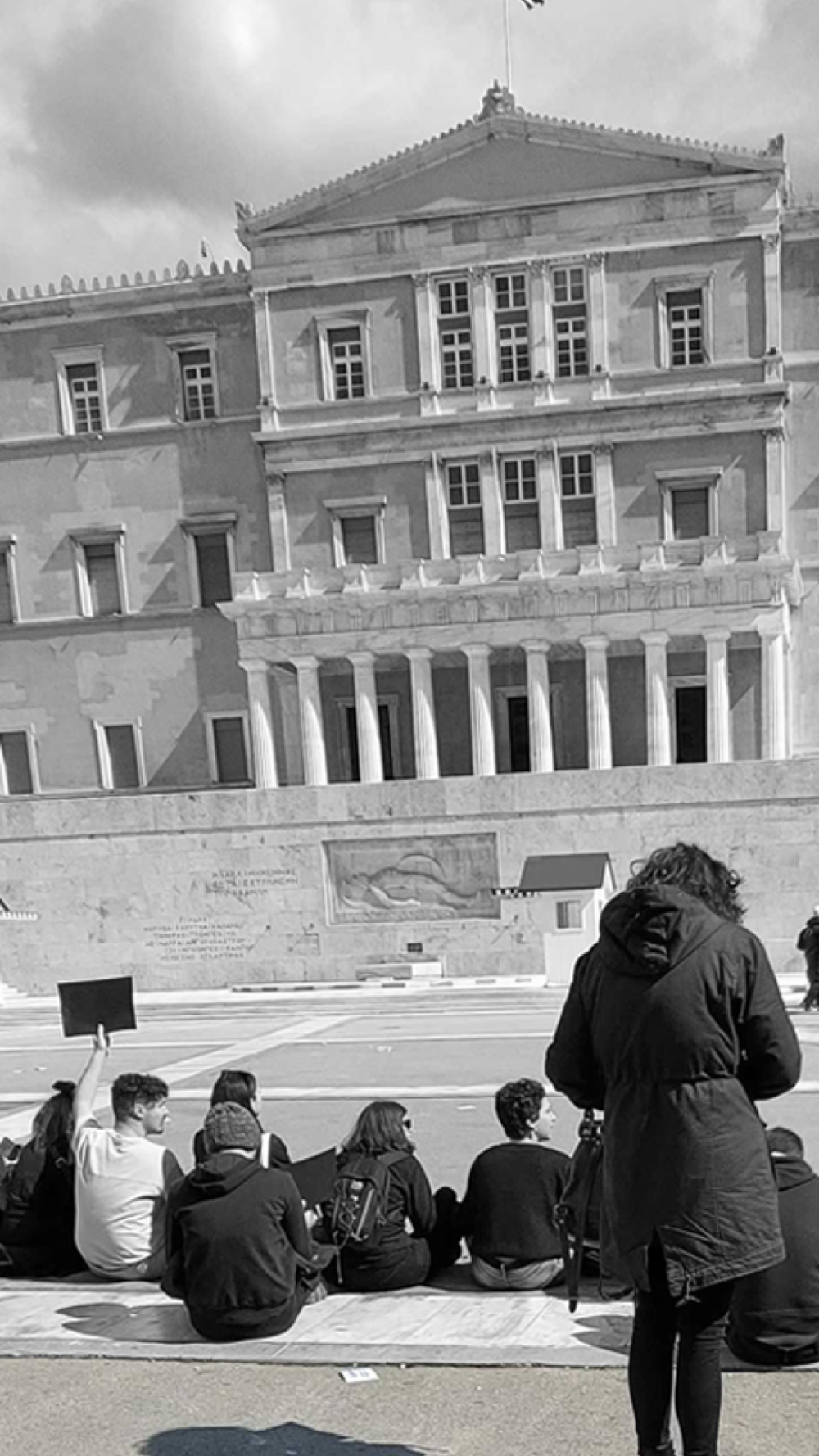
Ruth Milkman Interview: Both Millennials and Gen Zers face deep uncertainty about the future
In 2016, Ruth Milkman took over the presidency of the American Sociological Association. Back then, the distinguished American sociologist specializing in labor issues, dedicated her entire presentation to the generation of Millennials.
A year later, her presidential address was published in the academic journal American Sociological Review, titled “A New Political Generation: Millennials and the Post-2008 Wave of Protest”.
In her paper, Milkman argues that the Millennial generation “comprise a new political generation with lived experiences and worldviews that set them apart from their elders”. She also notes that this is a generation that fights against class, gender and racial inequalities.
Almost 6 years after her initial speech, we asked her to describe the role that Gen Z – and the young generation in general – has played in the major social events and movements of recent years in the United States.
In her interview at Eteron, Milkman refers to the new generation’s involvement in the Black Lives Matter movement, the ways it has contributed to the reorganization of labor unions, and the narrative techniques it uses to spread its message.
What is the impact of the millennial cycle of protest on the following generation, Generation Z? What would you identify as the most important continuities or discontinuities between Millennial and Gen Z activism, as related to modes of organization and strategic repertoires?
I have not done any primary research on Generation Z, but the evidence I am familiar with (at least in the U.S.) suggests that they are strikingly similar to Millennials in their worldviews and political attitudes, as this report from the Pew Research Center documents. Like Millennials, Gen Zers express more progressive views than their elders on issues ranging from race to climate change, from the rights of sexual minorities to organized labor. Both age groups are more racially diverse and more highly educated than any previous generation, and the college-educated among them tend to be the most politically progressive. For both, expectations and aspirations have been frustrated at key junctures – for Millennials by the Great Recession, and for Gen Zers by the economic crisis tied to the COVID-19 pandemic. Both Millennials and Gen Zers also face deep uncertainty about the future – not least in regard to climate change. The movement of climate activists is among those disproportionately populated and led by Gen Zers and Millennials.
The framework of intersectionality is used in your work in order to highlight the interconnections between different struggles against racism, sexism, and widening class inequality. How does the framework of intersectionality influence youth political participation and vice versa?
Millennials and Gen Zers are instinctively intersectional. They themselves are more diverse demographically in terms of race and ethnicity than any previous U.S. generations. They overwhelmingly accept same-sex marriage, transsexuals and other sexual minorities. Many actively oppose racism and support movements like #MeToo and immigrant rights. And as I already noted above they are both aware of and critical growing class inequality. They see these issues not as competing but instead as interconnected parts of the neoliberal order.
It’s also worth noting that self-identified queer and trans activists are overrepresented among Gen Z and Millennial political activists. I’m not sure why this is the case, but it amplifies the intersectional aspect of all the movements they are engaged in.
The Black Lives Matter movement became an international reference point in 2020. Based on your previous analysis of BLM during the 2010s, how would you comment on the recent developments and more particularly the role of Gen Z and the uses of social media in the BLM movement?
The first wave of Black Lives Matter was led by black Millennials, disproportionately female and often queer-identified, as I documented in the article you mentioned. More recently, we have seen Gen Zers of all races and ethnicities protesting against racism in even greater numbers. Authoritative accounts of the massive 2020 street protests over the murder of George Floyd suggest that more than half of the U.S. protesters were under age 30. The leaders were also disproportionately young, and their organizing was largely done on Instagram and other social media. Another difference was that while the initial wave of BLM protests was dominated by Blacks, in 2020 the protests attracted massive numbers – indeed often a majority – of white participants, most of them young and highly educated.
The social media piece is increasingly complex. In the first wave of Millennial political activity – for example Occupy and the first wave of BLM, young people were far more adept at using these tools for organizing than older people – and crucially, than the police and other state agencies. Now many of these groups have caught up. Social media is still deployed by young activists, but it’s also used by older right-wing activists, the police, and all sorts of other people.
According to a recent Gallup poll, U.S. Gen Zers appear to be overwhelmingly in favor of organized labor. Further, there are examples of “Gen Z workers’ victories”, like the Starbucks union vote in New York in December 2021. Is this actually massive as a tendency in the US?
Yes, interest and involvement in the labor movement has been growing rapidly among young Americans. When I was researching Millennial social movements, labor had not yet emerged as a major field of activity for them as a generation, but that has changed now. Building on the awareness and concern about skyrocketing inequality first expressed in the Occupy Wall Street movement, as well as Bernie Sanders’ presidential campaigns and the spectacular growth of the Democratic Socialists of America, recognition of the potential of labor unions to empower workers and combat inequality has exploded among Millennials and Gen Zers, especially the college-educated.
The occupations where unionizing efforts are most notable include journalists (in both print and digital media), college adjuncts and teaching assistants, political staffers, museum workers, nonprofit staffers, and other fields that recruit highly educated workers but offer meager salaries incommensurate with their skill levels. The 2018 wave of teachers’ strikes was led by Millennials, many of them veterans of the 2016 Sanders campaign, and it is no accident that the initial organizing took place on Facebook. The Starbucks case is different because higher education is not required to perform the job of a barista, but the leaders of the successful 2021 union campaign in Buffalo, New York were in fact college-educated, progressive young activists. Their success has inspired similar union drives at other Starbucks stores around the U.S., underway at this writing.
These efforts are definitely having an impact, but I would not call it “massive.” The number of new union members resulting from these efforts is modest, far too small to impact the nation’s low unionization level. Only 6 percent of private-sector workers, and 11 percent of all workers in the U.S., are unionized today – the lowest level in a century. Public approval of labor unions is higher than it has been in many decades – especially but not only among young Americans. And President Joe Biden is more sympathetic to organized labor than any U.S. president since World War II. But translating all that into a true upsurge of unionism is a challenging project.
The labor relations law in the U.S. is extremely biased in favor of employers. Corporations routinely take both legal and illegal actions to squash unionization efforts, often successfully. For example, just Starbucks recently fired a group of seven workers in Memphis, Tennessee who were actively trying to unionize. It is illegal to fire workers for union activities, but it is a common practice. (Typically, as in this case, management claims that the firings were for other reasons.) And there are many perfectly legal means of combating unionization efforts as well. The employer intimidation tactics that are often highly effective in workplaces where unions are organizing may be less potent where workers are both highly educated and politically committed, like the young journalists, college teachers, and other professionals I mentioned earlier.
There is a proposed labor law reform measure currently under consideration in Congress, the PRO Act, but it has no prospect of passage in the foreseeable future. That does not preclude continuing union organizing by young workers, but it definitely makes it harder to imagine a broader labor upsurge. And we know from history that union growth comes in spurts, not incrementally. It’s too early to say whether such a spurt is possible in the coming years, but I’m skeptical.
In your analysis of the youth-led movements during the 2010s, you emphatically note the importance of Karl Mannheim’s theory of generations. In what ways can a return to Mannheim be useful for a contemporary understanding of the generational aspect and the making of political generations?
In contrast to many recent commentators who differentiate between Millennials (also known as Gen Y), “Gen Z,” and “Gen X” mainly on the basis of demographic characteristics (and sometimes consumer tastes), Mannheim defines generations on the basis of their distinctive lived experiences and the worldviews that those experiences generate. For Mannheim a generation is not a biological phenomenon defined by age but a sociological one defined by the dramas of history. What matters is not the year in which people happen to be born, but rather their historically specific, shared experiences, especially during the formative life stages of adolescence and early adulthood. Those shared experiences decisively shape worldviews that set one generation apart from others. Although Mannheim developed this theory in the 1920s, the most familiar example of what he had in mind, at least in the U.S., is the “Depression generation” – which came of age during the economic and political upheaval of the 1930s, a crisis that shaped their worldviews not only during the Depression itself but also throughout their adult lives.
From a Mannheimian perspective, one might argue that Millennials and Gen Zers constitute a single generation, since they were shaped by so many of the same historical experiences. Both groups grew up expecting that inequalities along racial and gender lines had been largely eradicated, and then learned about widespread police brutality and sexual assault. Both are “digital natives” who are far more adept with social media than previous generations. And both faced a labor market in which precarious employment is increasingly the norm – made worse by the timing of their entry into the labor market during a major economic crisis. Indeed, some mainstream commentators like William Frey, a Brookings demographer, treat the recent activism of Gen Z and Millennials as a single phenomenon (although with no reference to Mannheim).
As you argue in your work, storytelling, i.e. the art of telling stories, appears to be an increasingly important strategy for several youth-led contemporary social movements. What is your opinion on the development of this skill within social movements?
This was an especially important strategy among the “Dreamers” – young immigrants who came to the U.S. as children and lacked legal status. They were initially mentored by an older generation of immigrant rights activists who helped them craft stories that would inspire sympathy from a wider public. At a later stage, however, the Dreamers became critical of that approach, because it appeared to demonize their parents even as it presented them as model citizens. They chose to adopt a more complex narrative that recognized as valid the reasons their parents had entered the U.S. without authorization, and that embraced the range of experiences of immigrant children, not only the most exemplary.
In recent years, storytelling has become a feature of many social movements – not only among those led by Gen Zers or Millennials. By crafting compelling narratives, social movement leaders hope to win support from broader constituencies than those they represent directly, in order to advance their goals. Social media, which can communicate those narratives or stories, are often instrumental in those efforts.



